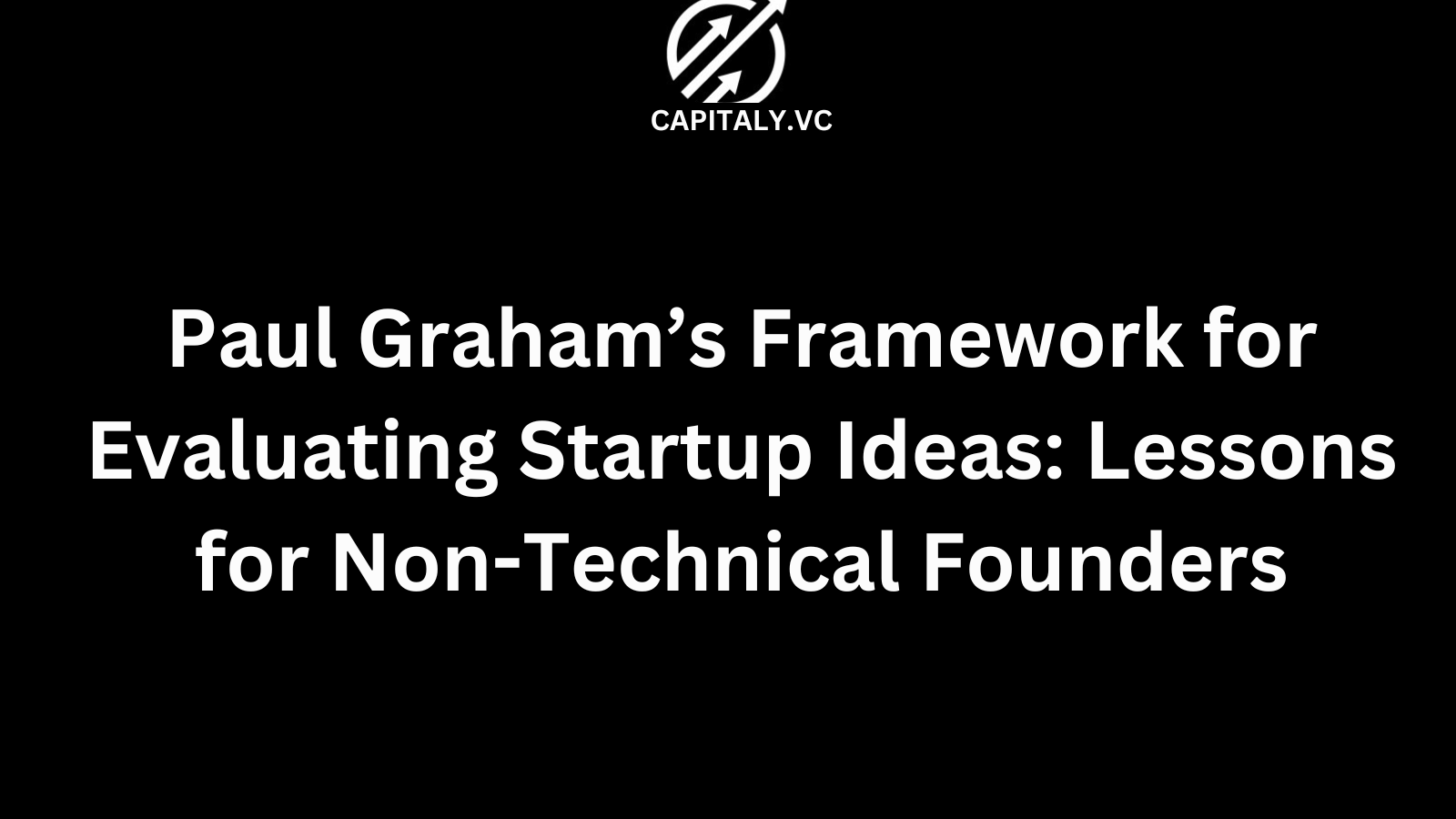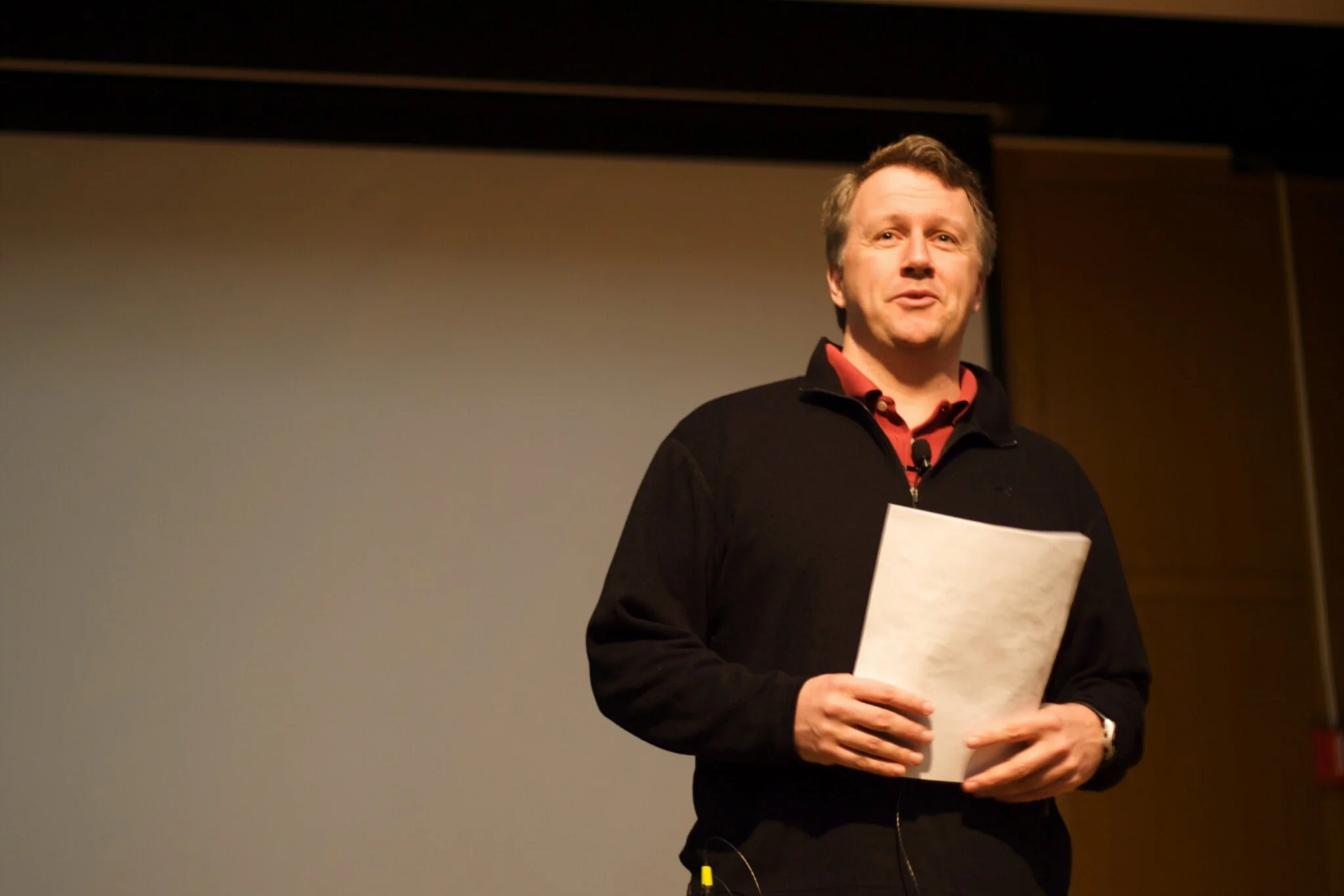Paul Graham’s Framework for Evaluating Startup Ideas: Lessons for Non-Technical Founders
Paul Graham’s Framework for Evaluating Startup Ideas: Lessons for Non-Technical Founders

You don’t need to be a coder to use Paul Graham’s startup idea frameworks.
In fact, some of the best insights for non-technical founders come from how he simplifies what makes an idea truly great.
This post walks through Paul Graham’s frameworks—step by step—with real-world lessons, examples, and founder-friendly action items.
Let’s get into it.

Who is Paul Graham?
Paul Graham is the co-founder of Y Combinator, the world’s most influential startup accelerator.
He’s also the author of dozens of essays that have shaped how founders think.
His core mission?
Make founders think clearly.
Why His Startup Frameworks Matter
Paul Graham’s frameworks have helped birth companies like Airbnb, Stripe, and Dropbox.
If you want to raise money, build traction, or avoid wasting years on a bad idea—his playbook is gold.
Understanding the “Live in the Future” Principle
PG’s most famous test: “Live in the future and build what’s missing.”
What does that mean for you?
- Don’t wait for trends—predict them.
- Solve problems that will matter in 2–5 years.
- If it feels too early, it’s probably just right.
Think Uber in 2008. Most people didn’t even have smartphones.
How PG Tests Startup Ideas
Here’s how Paul Graham filters ideas:
- Is it something you desperately want?
- Are other people like you?
- Is the market growing?
- Would you work on this even if it failed?
If you say yes to all, you might be onto something.
For more frameworks, read: How to Write a Strong, Convincing Investor Memo
The Urgency-Depth Graph Explained
PG references a simple mental model: the urgency-depth graph.
- High urgency + Deep problem = Fundable.
- Low urgency + Shallow = Hobby.
Plot your idea.
Be honest.
Then move accordingly.
Utility vs. Novelty in Ideation
Not all ideas need to be new.
In fact, Paul argues that "useful > original."
- Solving boring problems that actually exist?
✅ That’s a startup. - Chasing shiny objects with no customer?
❌ That’s a waste.
Read more: Why Boring Startups Raise Capital Faster
How to Spot “Hair on Fire” Problems
Ask yourself:
If you took away this product, would anyone panic?
If the answer is no—you’re not solving a hair-on-fire problem.
Examples:
- Stripe: “I can’t get paid online.”
- Figma: “Design collaboration sucks.”
- Notion: “Docs, tasks, and wikis are all in separate apps.”
Solve that level of pain.
Case Studies from Y Combinator
YC standouts:
- Airbnb – Trust and housing scarcity.
- Stripe – Payments.
- Zapier – No-code automation.
These were all hair-on-fire problems.
More breakdowns here: Crash Course: YC for First Timers
Applying Paul Graham’s Rules to Your Pitch
Investors care about:
- Clarity of the problem
- Founder obsession
- Unique insight
- A believable wedge into a big market
PG’s advice?Don’t sell a product. Sell the problem and why it’s inevitable that you’ll solve it.
How Investors Evaluate Startup Depth
They ask:
- Is this founder close to the problem?
- Is there a structural advantage?
- Is this idea riding a macro tailwind?
Graham’s writing teaches us to anchor in truth, not theatrics.
Avoiding Startup Idea Pitfalls
Avoid these red flags:
- “Uber for X” without understanding X.
- Products that only exist if the market is educated first.
- Building solutions without problems.
If your pitch sounds clever but empty, it’s time to rethink.
Founder-Market Fit According to Graham
One of PG’s best insights:
"The best startup ideas are derived from personal pain."
Translation:If you’re not living the problem, it’s harder to win.
You don’t need to be a tech wizard—
You just need to deeply care.
Comparing PG’s Advice With Other VC Wisdom
Compared to others:
- Mark Suster: GTM execution.
- Fred Wilson: Transparency and brand.
- Brad Feld: Mental health and long-term resilience.
Graham?
He zooms in on idea selection more than anyone.
Also read: Fred Wilson’s AVC Blog: Building a Brand in Venture Capital
How to Iterate Like Paul Graham
PG says: “Release early. Get real feedback. Iterate fast.”
His recipe:
- Start with something that barely works.
- Ship to a tiny group of real users.
- Watch, listen, fix.
- Repeat.
No perfection. Just progress.
Action Steps for Idea Validation
Use this checklist:
- Talk to 10 users.
- Ask “What sucks the most?”
- Build the tiniest solution.
- Ship it.
- Repeat for 2–3 months.
Still not working?
Kill it fast. Or pivot even faster.
FAQs
1. What is Paul Graham’s most famous essay?
"How to Start a Startup" and "Startup = Growth."
2. Does Paul Graham invest directly in startups?
Mostly via Y Combinator.
3. What’s the “Live in the Future” rule?
Build for problems that will exist in 3–5 years.
4. Can non-technical founders apply his ideas?
Yes. They're about thinking clearly, not coding.
5. How does Graham view competition?
Ignore it early. Focus on solving a deep problem.
6. Is founder-market fit more important than product-market fit?
Founder obsession is key.
7. How does Graham define a good startup idea?
Urgent, deep, scalable, and painful.
8. What is Y Combinator’s biggest success?
Airbnb, Stripe, and Dropbox.
9. How should I pitch my idea using PG’s frameworks?
Start with the pain. End with inevitability.
10. Where can I read more of Paul Graham’s essays?
paulgraham.com
Conclusion
Paul Graham’s framework for evaluating startup ideas gives non-technical founders a tactical edge.
You don’t need to write code.
You just need to understand people, pain, and the future.
Apply his thinking. Validate faster. Build smarter.
Subscribe to Capitaly.vc to raise capital at the speed of AI.



.png)